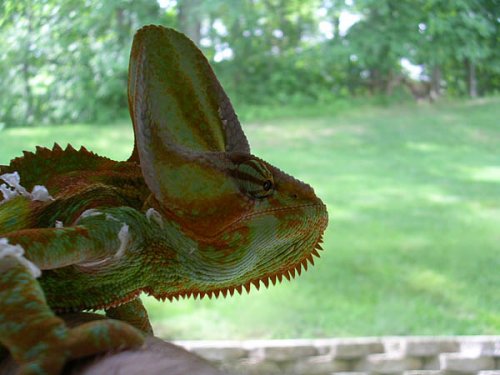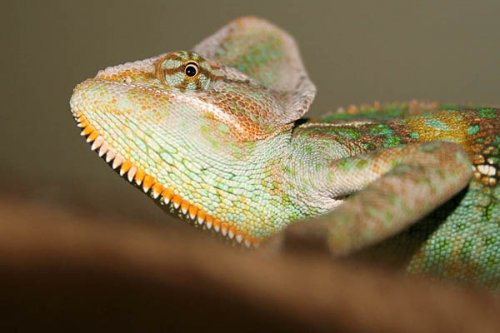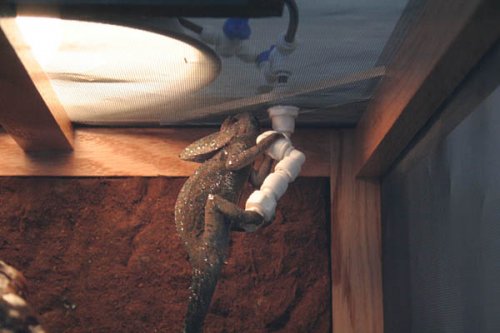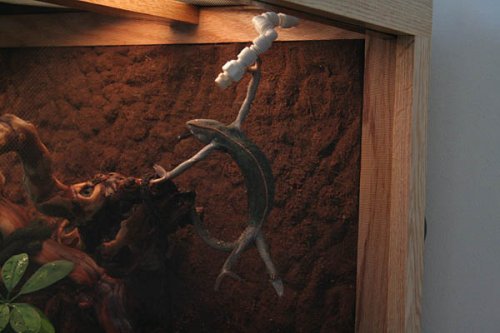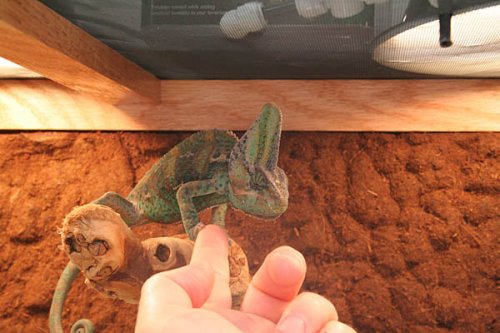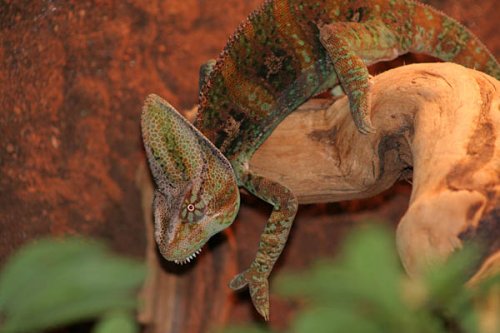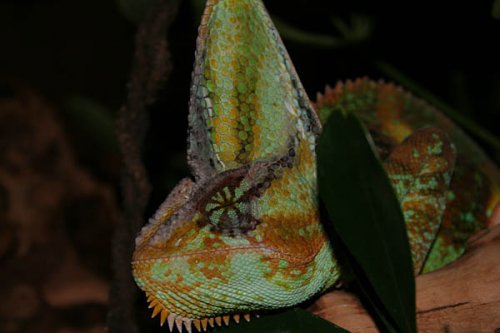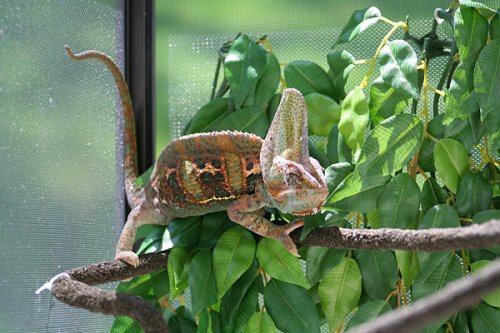Navigation
Install the app
How to install the app on iOS
Follow along with the video below to see how to install our site as a web app on your home screen.
Note: This feature may not be available in some browsers.
More options
You are using an out of date browser. It may not display this or other websites correctly.
You should upgrade or use an alternative browser.
You should upgrade or use an alternative browser.
Veiled Izzy not doing good
- Thread starter Mesnik
- Start date
jojackson
New Member
So is it faster or slower than humans?
Likely to be slower mate, different metabolism, healing can be sped up by boosting the metabolism with slightly higher temps, This is common, for herps with RTI's canker etc, But its a tossup, since a faster metabolism will also increase the speed of infection developement if already present. I wouldnt mess with it, just give it another few weeks atleast. Be sure to inspect the limb for color/sensation to elimenate the possibility of circulation interuption from the splint/bandage. Id try to keep it dry too, which may not be easy.
Best wishes for your chams mate.
dodolah
Retired Moderator
I found that wound healing is slower... couldn't get the exact answer on bone specifically.
http://www.svsvet.com/resources_article.php?articleid=3
http://www.bioone.org/doi/full/10.1638/1042-7260(2005)36[731:CC]2.0.CO;2
http://www.svsvet.com/resources_article.php?articleid=3
http://www.bioone.org/doi/full/10.1638/1042-7260(2005)36[731:CC]2.0.CO;2
jojackson
New Member
I did, same link
http://www.svsvet.com/resources_article.php?articleid=3
http://www.svsvet.com/resources_article.php?articleid=3
Healing of bone in reptiles takes at least 6-18 mo.
ORTHOPEDICS
Long bone fractures in reptiles are usually the result of trauma or metabolic bone disease. Most fractures occur after relatively low impact trauma making the incidence of comminuted fractures low and because most reptiles have tough skin they are usually not open fractures. Little information is available regarding bone healing in reptiles; however, it appears that it occurs at a significantly slower rate compared with birds and mammals. Healing time for traumatic fractures is generally 6-18 mo. Pathologic fractures from nutritional secondary hyperparathyroidism seem to heal much quicker (6-8 wk).
General principles of fracture fixation apply to reptile patients - rigid stabilization and anatomic alignment with minimal disruption of callus and soft tissues. Many factors must be considered when deciding on the method of fixation to be used. The forces exerted on the fracture (bending, compression, rotation, and shear) must be neutralized to promote healing. The more forces that must be neutralized by the fixation, the higher the incidence of complications and failure. Practical consideration include the cost of the materials, ease of application, availability of equipment, and the surgeon's level of experience with various fixation devices. In many cases some degree of malalignment may be acceptable. The patient's size and conformation may influence the type of device used and how it is applied. The patient's metabolic status may preclude a surgical procedure for orthopedic repair. Finally, financial concerns are often the major factor to be considered.
A wide variety of splinting and casting techniques have been used successfully. Anesthesia is recommended during the application of external coaptation. All forms of external coaptation should be monitored closely for signs of vascular compromise, soiling, slippage, or other problems which may require splint replacement. Soft, conforming cast padding (Specialist Cast Padding, Johnson & Johnson, New Brunswick, NJ; Webril, Kendall Co., Boston, MA) and conforming roll gauze (Conform, Kendall Co., Boston, MA) work well for the initial padding layers. These materials should be cut to an appropriate width for the size of the patient. Using a roll that is too wide will result in a lumpy bandage. The bandage may be reinforced with wood applicator sticks, tongue depressors, aluminum rod, light weight casting material, or other substance that will add bending stability. Most of these do not conform to the normal angles of a reptile limb. Orthoplast (Johnson & Johnson, New Brunswick, NJ) and Hexcelite (Hexcel Medical, Dublin, CA) are firm at room temperature but when heated in water become malleable. This allows the material to conform closely to the configuration of the limb. Orthoplast is a solid sheet while Hexcelite is a webbing available in roll or sheet form. The Hexcelite is much easier to conform but is not as rigid when cool.
Mesnik
New Member
Very positive and constructive input from you two!!
I am not looking to mess with it just thinking ahead so I don't miss anything and have to regret later.
I have been keeping an eye on blood circulation... We don't need to solve one issue and start another one!
Thanks again, guys!!
(the information on the links are VERY nice! Thanks SOOO much for sharing!!)
Roberto.
Vince
New Member
I just wanted to let you know i have been watching this thread and i hope your chameleon pulls through. You have been doing everything in you power to try to correct things. You definitely deserve a pat on the back for all of the good work so far. 
I was just wondering where in Michigan are you located? Im currently going to school in Marquette, but am originally located near the Traverse City area. (about an hour North)
Also, i was curious as to where you do you vet business? There isnt any herp vets up here.
I was just wondering where in Michigan are you located? Im currently going to school in Marquette, but am originally located near the Traverse City area. (about an hour North)
Also, i was curious as to where you do you vet business? There isnt any herp vets up here.
Mesnik
New Member
Vince,
Thanks for the note. I take seriously everything I do in life. Unfortunatelly, I don't succeed everytime on the first try...
It really means a lot that I get a feedback on what I am doing. Not to brag, but to make sure I am on the right path. I would like to get more chameleons but I want to make sure I know what I am doing...
My 180 gal salt water tank is up and running for over 7 years with the SAME fish!!
Anyway, thanks VERY MUCH for following this and for the very kind words.
To answer your question, I am in Lake Orion... about exit 81 on I-75.
I use a vet out in Clinton Twp, about 20 mins from my house ...(http://www.parkway-animal-hospital.com/)
Let me know if you are ever in town!!!
Thanks for the note. I take seriously everything I do in life. Unfortunatelly, I don't succeed everytime on the first try...
It really means a lot that I get a feedback on what I am doing. Not to brag, but to make sure I am on the right path. I would like to get more chameleons but I want to make sure I know what I am doing...
My 180 gal salt water tank is up and running for over 7 years with the SAME fish!!
Anyway, thanks VERY MUCH for following this and for the very kind words.
To answer your question, I am in Lake Orion... about exit 81 on I-75.
I use a vet out in Clinton Twp, about 20 mins from my house ...(http://www.parkway-animal-hospital.com/)
Let me know if you are ever in town!!!
Mesnik
New Member
Nice call today... the Vet was calling to follow up on Izzy...
Funny thing this morning: After his soaking and meds, I put him back in the tub and after a few minutes I see him stretching almost as if his limbs were cramping or something... I freaked out but when I was going to touching here comes this huge white poop!!
Oh well, you had to be there I guess...
Funny thing this morning: After his soaking and meds, I put him back in the tub and after a few minutes I see him stretching almost as if his limbs were cramping or something... I freaked out but when I was going to touching here comes this huge white poop!!
Oh well, you had to be there I guess...
Mesnik
New Member
Well, the battle is over for our little friend, Izzy. He is for sure no longer in pain...
This morning, after his meds, he went in what looked like shock. I put him down and he immediately turned a weird dark color, opened his mouth a bit, and that was it…
Yesterday afternoon I gave him a small dose of Flukers Reptaid, since he had had nothing to eat in the last 4/5 days… I don’t know if that had anything to do with it?
I did noticed over these last 21 days of meds that his “mood” was going down by the day.
I don’t know.
Need to gather some strength and go burry him…
Thanks for everyone that supported and sent us messages!!!!
Here is to remember him by...
This morning, after his meds, he went in what looked like shock. I put him down and he immediately turned a weird dark color, opened his mouth a bit, and that was it…
Yesterday afternoon I gave him a small dose of Flukers Reptaid, since he had had nothing to eat in the last 4/5 days… I don’t know if that had anything to do with it?
I did noticed over these last 21 days of meds that his “mood” was going down by the day.
I don’t know.
Need to gather some strength and go burry him…
Thanks for everyone that supported and sent us messages!!!!
Here is to remember him by...
Attachments
Chamfan123
New Member
I'm so sorry!
I've following the thread and everything seemed to to be going so well


Just be happy knowing you did the best you could for him
R.I.P. little solider...
I've following the thread and everything seemed to to be going so well
Just be happy knowing you did the best you could for him
R.I.P. little solider...
Mesnik
New Member
THANK YOU all for the kind words of encouragement...
It was so hard to pick him up and bring him outside. And having to explain to our 3.5 year-old girl... I don't know where she got that, but she said: "now we have to go to the animal shelter and look for another Izzy that has a long tail and eyes that open and close".
The biggest thing is how fast this whole thing went down!! Too crazy!!
(I still have to deal with a tub full of crickets!!! I cannot let them go as the temps outside are 20/30 F!!!)
Once more, I cannot thank you all for this huge support!!! If I can ever pay it back...
It was so hard to pick him up and bring him outside. And having to explain to our 3.5 year-old girl... I don't know where she got that, but she said: "now we have to go to the animal shelter and look for another Izzy that has a long tail and eyes that open and close".
The biggest thing is how fast this whole thing went down!! Too crazy!!
(I still have to deal with a tub full of crickets!!! I cannot let them go as the temps outside are 20/30 F!!!)
Once more, I cannot thank you all for this huge support!!! If I can ever pay it back...
Similar threads
- Replies
- 5
- Views
- 837

